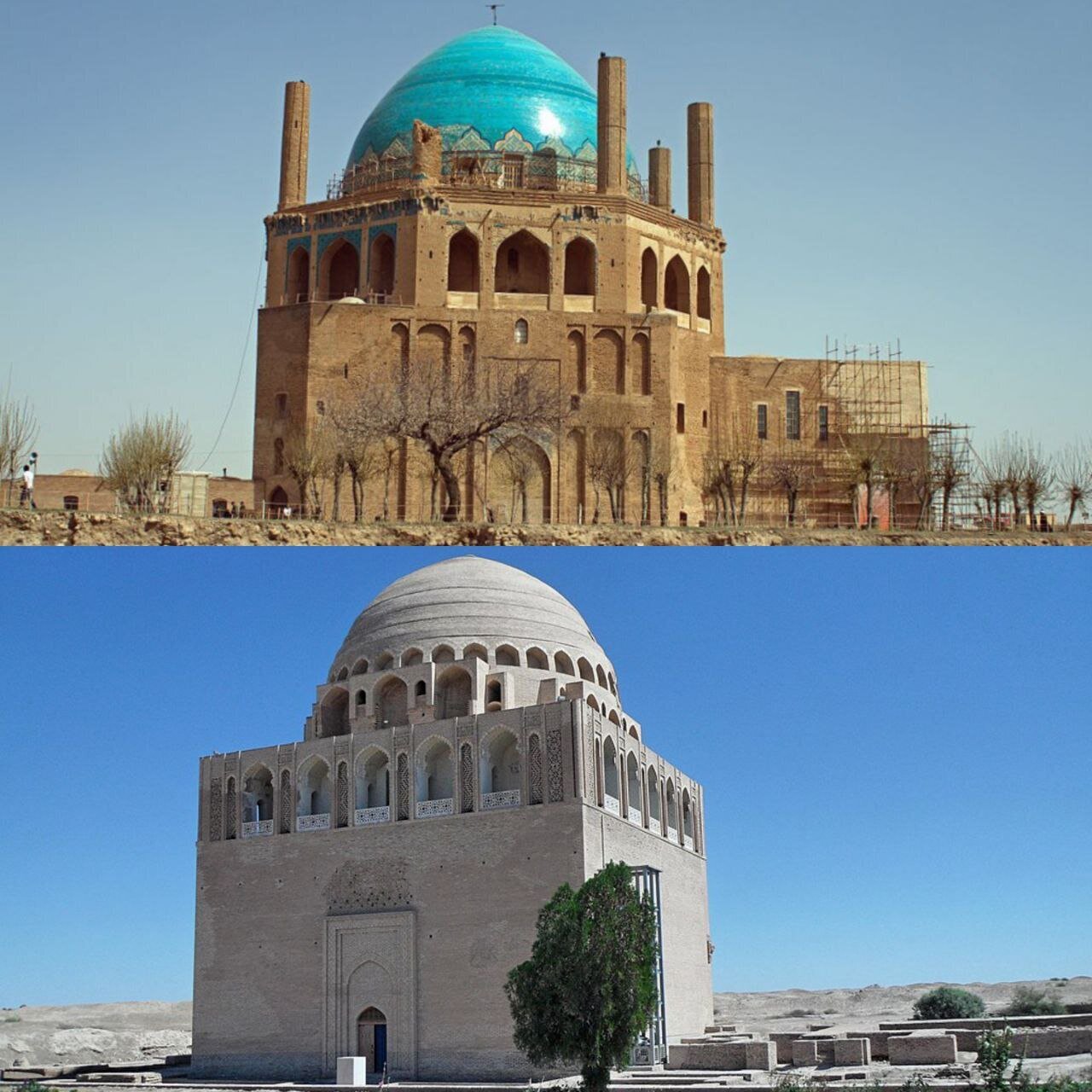A tale of similar mausoleums: one in Iran, the other in Turkmenistan

TEHRAN - The Mausoleum of Ahmad Sanjar, located within the historic city of Merv in Turkmenistan, and the Mausoleum of Oljaytu, famously known as the Soltaneyeh Dome, situated in Iran's Zanjan province, have long been celebrated for their architectural splendor and historical significance.
The Mausoleum of Ahmad Sanjar, dating back to the 12th century, is a testament to the Seljuk architecture of Central Asia, reflecting the grandeur of the Seljuk Empire. Meanwhile, the Soltaneyeh Dome, built in the 14th century during the Ilkhanate period, represents the pinnacle of Persian architecture under the Ilkhanate rule.
Both mausoleums feature monumental domes with intricate brickwork, adorned with geometric patterns and inscriptions that showcase the craftsmanship of their respective eras. In addition, Sultan Sanjar's mausoleum is devoid of decorations, but the Soltaneyeh Dome is adorned with various inscriptions and geometric patterns. Additionally, both buildings have double-layered brick domes, and similarities can be seen in the exterior view of both structures.
The tomb of Ahmad Sanjar, erected in 1157 within the medieval confines of Merv amidst the Karakum Desert, stands as a testament to the enduring legacy of its namesake ruler. Commissioned by Sanjar’s successor, Muhammad ibn Aziz, this architectural marvel emerges as a pivotal landmark along the historic Silk Road.
Throughout his reign, Ahmad Sanjar valiantly repelled numerous incursions and rebellions, only to succumb to the forces of the Oghuz. Following the devastation wrought by the Oghuz invasion, Merv witnessed a gradual decline, culminating in its tragic incineration by Mongol hordes in 1221, which engulfed the mausoleum in flames.
Yet, from the ashes of destruction emerged a story of resilience and restoration. Over the ensuing centuries, the Tomb underwent meticulous refurbishment, thanks to the efforts of Soviet, Turkmen, and Turkish architects during the 20th and 21st centuries. Today, it stands as a poignant symbol within The State Historical and Cultural Park "Ancient Merv," an esteemed UNESCO World Heritage site.
The mausoleum itself boasts a cubic structure crowned by a towering dome, soaring to a height of 27 meters. Its imposing walls reach a height of 14 meters, enclosing a dome measuring 17 meters in width and length. Despite these commendable efforts at preservation, certain elements, including its second story, the turquoise-clad outer dome, and ancillary structures within the complex, remain absent.
Yet, even in its incomplete state, the Tomb of Ahmad Sanjar commands attention as one of the few surviving specimens of secular Seljuk funerary architecture. Its stout proportions and distinctive hexadecagonal configuration surrounding the outer dome have left an indelible imprint, influencing subsequent architectural endeavors for generations to come.
Dominating the skyline, the 14th-century Gonbad-e Soltaniyeh, also known as "The Dome of Soltaniyeh," is widely acclaimed as an architectural masterpiece, owing to its innovative double-shelled dome and intricate interior embellishments.
According to UNESCO, the mausoleum's interior decoration is so remarkable that scholars such as A.U. Pope have likened the structure to a precursor of the Taj Mahal.
Designated by the UN cultural body as a pivotal monument in the evolution of Islamic architecture in central and western Asia, the Mausoleum of Oljaytu features a notably expansive dome, representing one of the earliest surviving examples of its kind in the region. This dome served as a significant architectural precedent for subsequent Islamic constructions.
The monumental dome, estimated to weigh approximately 200 tons, towers 49 meters from its base and is presently undergoing extensive restoration efforts. Erected between 1302 and 1312 CE, the main edifice potentially harbors the oldest double-shell dome in Iran.
For centuries, some scholars and researchers have drawn attention to the striking resemblance between these two structures, despite their geographical and cultural differences. They believe such as similarity is remarkable and suggests a significant cultural exchange between the two regions.
AM
